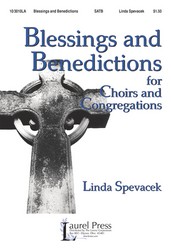- |
User Links
Alleluia
Hymn Information
- First Line
- Alleluia, alleluia, alleluia
- Text Source
- Traditional
- Tune Name
- ALLELUIA 7
- Composer
- Jacques Berthier (1982)
- Topic
- Church Year: Easter/Season of Easter · Responses: To Prayer · Short refrains
Copyright Information
- Text Copyright
- Public Domain
- Tune Copyright
- © 1984 Les Presses de Taizé, GIA Publications, Inc., exclusive North American agent
- Reprint/Projection Information
- Words and Music: Permitted with a license from OneLicense.net. If you do not own this license, please contact the copyright holder for permission.
Full Text
Scripture References
Further Reflections on Scripture References
"Alleluia" is the Greek spelling of a Hebrew expression, "Hallelu Yah[weh]," which simply means "praise the Lord." That phrase is found in the Old Testament as a frame around a number of the psalms (Ps. 103-106; 146-150) and in the New Testament in Revelation 19: 1-6. In Christian liturgical use "alleluia" is usually sung in conjunction with one of the Scripture readings as an acclamation (except during Lent). It is also used during Easter and appears as a phrase in many hymns. Some musical settings of "alleluia" are overtly jubilant; for example, George F. Handel's famous "Hallelujah" chorus in The Messiah. But there are many ways to sing "alleluia"-note all the "alleluia" hymns in the Psalter Hymnal (see the index of first lines).
Psalter Hymnal Handbook
Alleluia
Blessing/Benediction
Additional Prayers
Alleluia
Tune Information
- Name
- ALLELUIA 7
- Key
- d minor


 My Starred Hymns
My Starred Hymns






